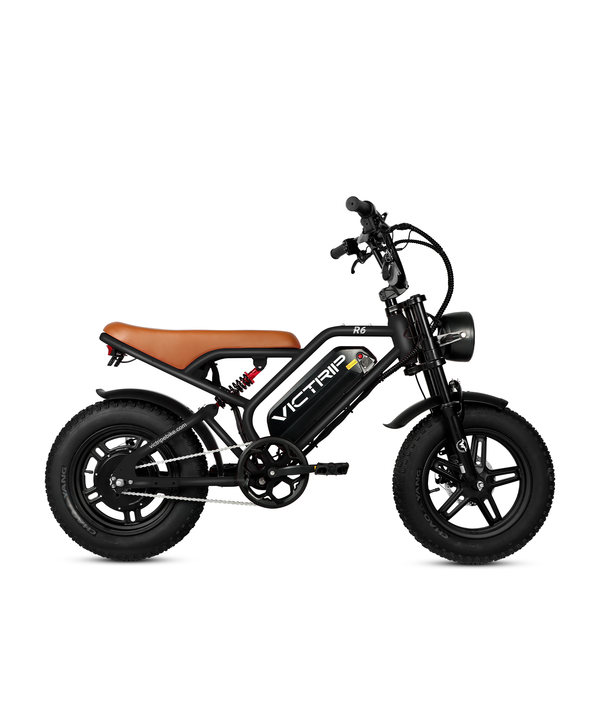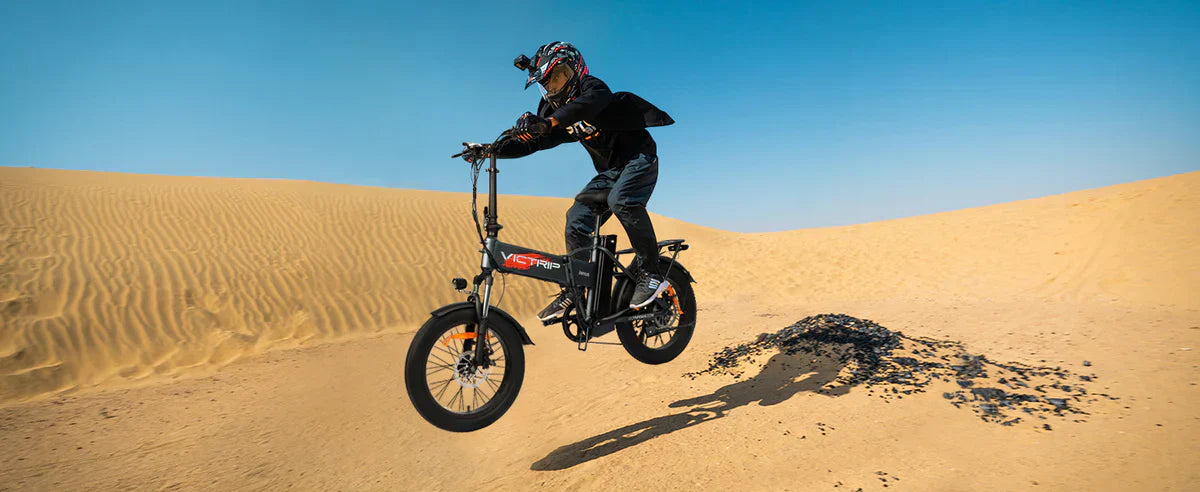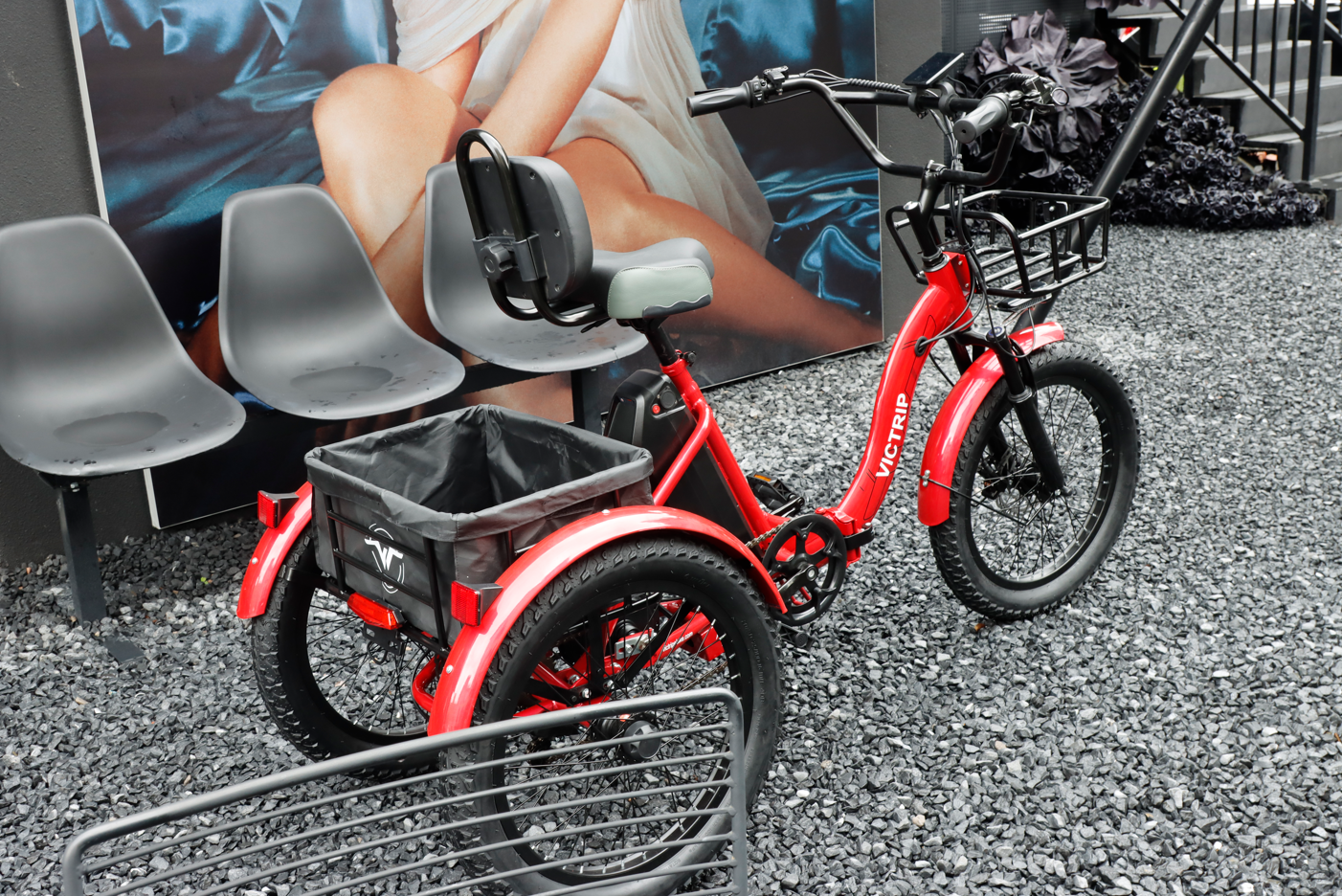
Choosing between a hub motor and a mid-drive motor isn’t just about labels — it shapes how an eBike accelerates, climbs, carries loads, feels around corners, and costs you over time. If you’re weighing Hub Drive vs Mid Drive, you’re asking about the single component that most strongly defines an eBike’s personality. This guide will walk you through why that choice matters, how the two systems differ mechanically, and which one usually wins for specific riders and uses. We'll be clear, practical, and evidence-based so you can make a confident decision.
What is a Hub Drive Motor?
A hub drive motor is mounted inside the hub of the wheel — either the front or the rear. It directly spins the wheel, converting electrical energy from the battery to rotational force at the rim. Hub motors are typically electric direct-drive (brushless) or geared hub motors (with internal reduction gears).

Front-hub vs Rear-hub: Practical implications
-
Front-hub: Keeps the rear drivetrain intact, easier retrofit, even traction front vs rear is different, can feel “pushy” on loose surfaces.
-
Rear-hub: Feels more like a conventional bicycle with power coming from the back; better traction under acceleration and usually favored for single-speed or commuter builds.
Hub motors are mechanically simple: fewer parts, often sealed and low-maintenance. That simplicity is why they remain common in entry-level and many commuter eBikes.
What is a Mid Drive Motor?
A mid-drive motor (also called center drive) sits near the bike’s bottom bracket and provides torque to the bike’s crank, so power goes through the chain and gears before reaching the wheel. That interaction with the drivetrain allows the motor to use the bike’s gearing to multiply torque to the wheel.
How mid-drive motors work with gears
Because the motor’s power is transmitted through the same gearset you pedal with, you can select low gear ratios to multiply torque for steep climbs or high ratios for faster flat speeds. This makes mid-drives very efficient for climbing and variable terrain — they leverage mechanical advantage the way a human rider does.
Seven Key Factors to Compare
Below we examine seven decisive factors when comparing Hub Drive vs Mid Drive. For each factor I’ll explain why it matters and how the two systems usually stack up.
1. Torque & Hill-Climbing
-
Mid drive: Typically superior. Because mid motors use the bike’s gears, they deliver more usable torque at the wheel for climbing steep grades.
-
Hub drive: Can be powerful (especially high-watt hub motors), but without gearing it’s fixed-ratio — meaning torque at the wheel is limited relative to mid-drives.
2. Efficiency & Range
-
Mid drive: Often more energy-efficient in hilly, variable-speed riding because the motor can run at an optimal RPM while gearing handles the torque multiplication.
-
Hub drive: Can be very efficient on flat, constant-speed rides. Direct-drive hubs are efficient at steady speeds; geared hubs can be a bit less so but are compact.
3. Weight & Balance
-
Hub drive: Adds weight to the wheel (rotational mass), can negatively affect handling and acceleration. Rear-hub increases rear weight bias.
-
Mid drive: Centralizes mass near the bottom bracket, improving balance and handling. Overall bike feels more like a regular bicycle.
4. Maintenance & Wear
-
Mid drive: Places extra stress on the chain, cassette, and derailleur; those parts can wear faster especially under high torque or frequent heavy use.
-
Hub drive: Less drivetrain wear because the motor bypasses the chain. Hub motors themselves are often sealed and can be low maintenance.
5. Cost & Complexity
-
Hub drive: Usually cheaper to manufacture and repair — great for budget bikes and simple retrofits.
-
Mid drive: Typically more expensive up front and costlier to service, but may represent better performance value for serious riders.
6. Ride Feel & Responsiveness
-
Mid drive: Natural, bike-like power delivery; better pedal-assist integration and uphill responsiveness.
-
Hub drive: Can feel like the bike is being “pushed” from the wheel — some riders like that instant shove, others find it less natural.
7. Cargo & Towing Capability
-
Mid drive: Better for heavy loads because gearing lets the motor operate in a comfortable range while generating the torque needed for towing/cargo.
-
Hub drive: Works for light loads but can be less efficient and struggle more on steep grades with heavy cargo.
Performance & Efficiency: real-world examples
To make this concrete: imagine two equal-weight eBikes on the same hill.
-
A mid-drive bike set to a low gear can keep the motor RPM in an efficient band, multiplying torque at the wheel and climbing steadily with less battery draw.
-
A hub-drive bike must rely on the motor’s own torque; on steep grades it may draw more current, heat up, and reduce range faster.
On the flats, a direct-drive hub can cruise nearly silently and efficiently at a constant speed for extended range. In real-world mixed terrain riding, mid-drives usually deliver better overall range and climbing performance.
Handling, Safety & Rider Experience
Because a mid-drive keeps mass centralized, it typically improves cornering and makes the bike feel predictable at low speeds — very helpful in traffic or with heavy front loads. Hub motors (especially rear-hubs) can make the rear feel heavier and slightly change handling dynamics at low speed.
Safety-wise, braking remains unchanged, but a motor that pushes unexpectedly (certain throttle setups on hub bikes) can surprise novice riders. Quality pedal-assist sensors and tuned controllers mitigate this in both systems.
Maintenance, Repairs & Longevity
-
Hub motors are often sealed units — low day-to-day maintenance. If a hub fails, wheel removal and motor replacement (or servicing by a tech) is required.
-
Mid drives require more drivetrain attention: a stronger chain, high-quality cassette, and routine replacement of wear items at shorter intervals. But mid most systems feature modular designs that technicians can service.
If you want the lowest ongoing maintenance for city commuting and plan few intense climbs, hub-drive systems typically cost less in upkeep. If you’re a performance rider ready to maintain your drivetrain, mid-drives are serviceable and deliver superior performance.
Cost Analysis: short-term vs long-term value
Upfront, hub-drive eBikes dominate the budget end. Mid-drive systems from leading manufacturers (Bosch, Shimano Steps, Brose) carry premium pricing. However, long-term value depends on how you ride:
-
Short, flat commutes → hub drive gives excellent value.
-
Frequent hills, cargo, long rides → mid drive may save time and provide better usability despite higher initial cost.
Think of it as total cost of ownership: motor type, drivetrain wear, battery performance, and how long you keep the bike all matter.
Best Use Cases — When Hub Drive Wins
-
Urban commuters on mostly flat routes.
-
Riders wanting low-maintenance, low-cost eBikes.
-
Casual riders who prefer “throttle push” riding styles.
-
Retrofitting a standard bike with a simple front or rear hub kit.
For extended range in mixed terrain while retaining hub-drive simplicity, the VICTRIP R6 off Road Electric Bike offers a smooth and efficient ride for commuters who occasionally tackle hills.
TOP PICK

VICTRIP®R6 Off Road Ebike
Best Use Cases — When Mid Drive Wins
-
Riders facing steep or variable terrain.
-
Cargo eBikes and towing applications.
-
Long-distance touring and off-road riders who need efficiency.
-
Cyclists wanting a natural pedaling feel and precise power delivery.
Quick Decision Table — Which to pick?
| Use Case | Recommended Motor |
|---|---|
| Short flat commute | Hub Drive |
| Heavy cargo / towing | Mid Drive |
| Hilly mixed-terrain | Mid Drive |
| Budget city runabout | Hub Drive |
| Long-distance / touring | Mid Drive |
| Retrofit on a budget | Hub Drive |
Environmental & Sustainability Considerations
Both motor types use similar materials (copper, rare-earth magnets, steel, electronics). From a sustainability point of view:
-
Extending component life (buy quality, maintain drivetrain) reduces environmental impact.
-
Mid-drive-induced drivetrain wear may create more replacement parts over lifetime; choose durable chains and cassettes.
-
Recyclability and manufacturer take-back programs are emerging; choose brands with clear sustainability policies.
Common Myths & Misperceptions
-
Myth: “Hub motors are always low power.” — False. There are high-watt hub motors that punch hard, but they still lack the gearing advantage of mid drives.
-
Myth: “Mid drives are more fragile.” — Not necessarily; they’re mechanically different and require drivetrain upkeep but are robust when used properly.
-
Myth: “Hub motors are louder.” — Not always; direct-drive hubs can be whisper-quiet at cruising speeds.
Conclusion & Final Recommendation
If your rides are primarily flat-city commutes, you’re budget-conscious, and you want a low-maintenance eBike, a hub drive is an excellent, sensible choice. If you face hills, carry cargo, crave a natural pedal-assisted feel, or want a bike that performs like a conventional bicycle with extra muscle, a mid drive will usually be the better investment.
In short: ask yourself where and how you ride most. For many everyday riders, Hub Drive vs Mid Drive is not a fight with a single winner — it’s about matching motor characteristics to your needs. If you still can’t decide, test ride one of each under conditions that match your typical route; real-world feel often settles the question faster than specs alone.
FAQs
Which motor gives the longest range?
It depends. On flat, steady-speed rides a direct-drive hub can be extremely efficient and offer excellent range. In mixed or hilly terrain, mid-drive motors are often more range-efficient because they use gearing to keep the motor in its sweet spot.
Are mid-drive eBikes harder to maintain?
They demand more attention to the chain, cassette, and derailleur because the motor’s torque passes through those parts. With higher-quality components and regular maintenance, longevity is excellent.
Can I convert my existing bike to a mid-drive?
Converting to mid-drive is complex and often not cost-effective. Hub-motor conversion kits are far more common and easier to install.
Which is better for carrying cargo or child seats?
Mid-drive motors usually perform better under heavy loads because they can use gears to increase torque to the wheel. Hub motors can still be used but may struggle on steep hills.
Do hub motors affect wheel repair or flat fixes?
Yes — hub motors increase wheel weight and complexity. Repairing a spoke or replacing an inner tube may require more effort or professional service depending on hub type.





Share:
Adult Tricycles vs. E-bikes: What’s the Difference?
How to Choose the Best Electric Tricycle for Your Needs?